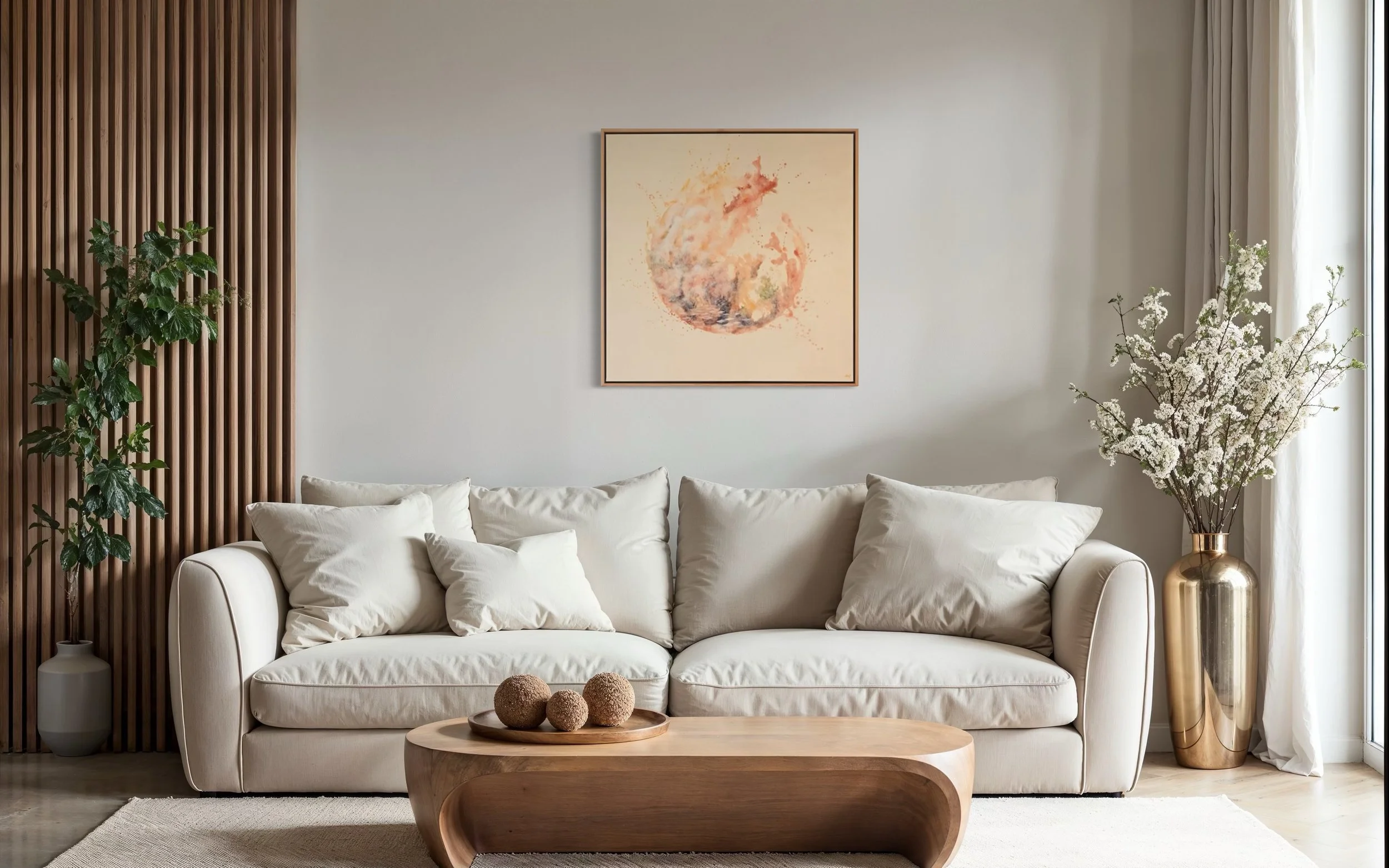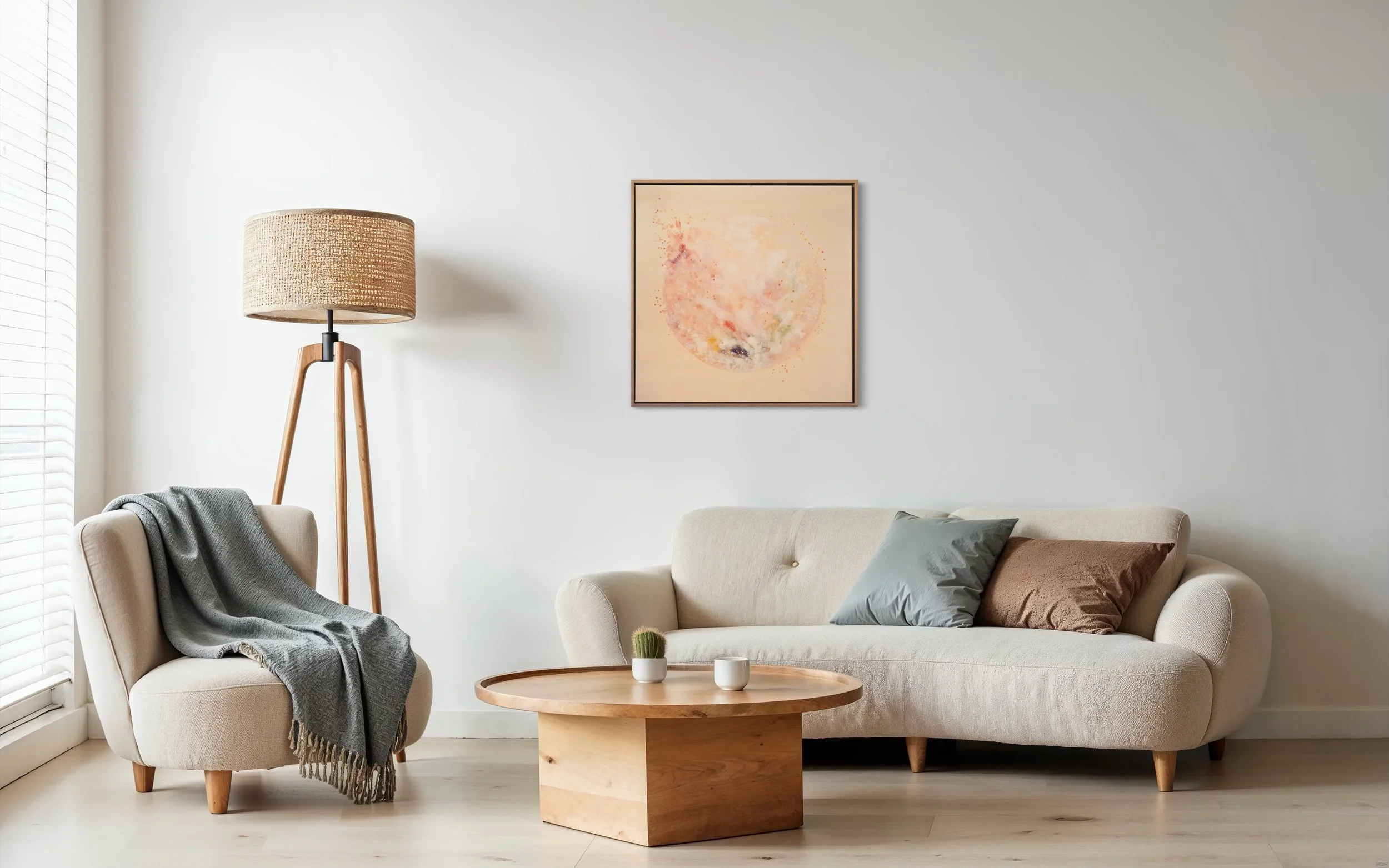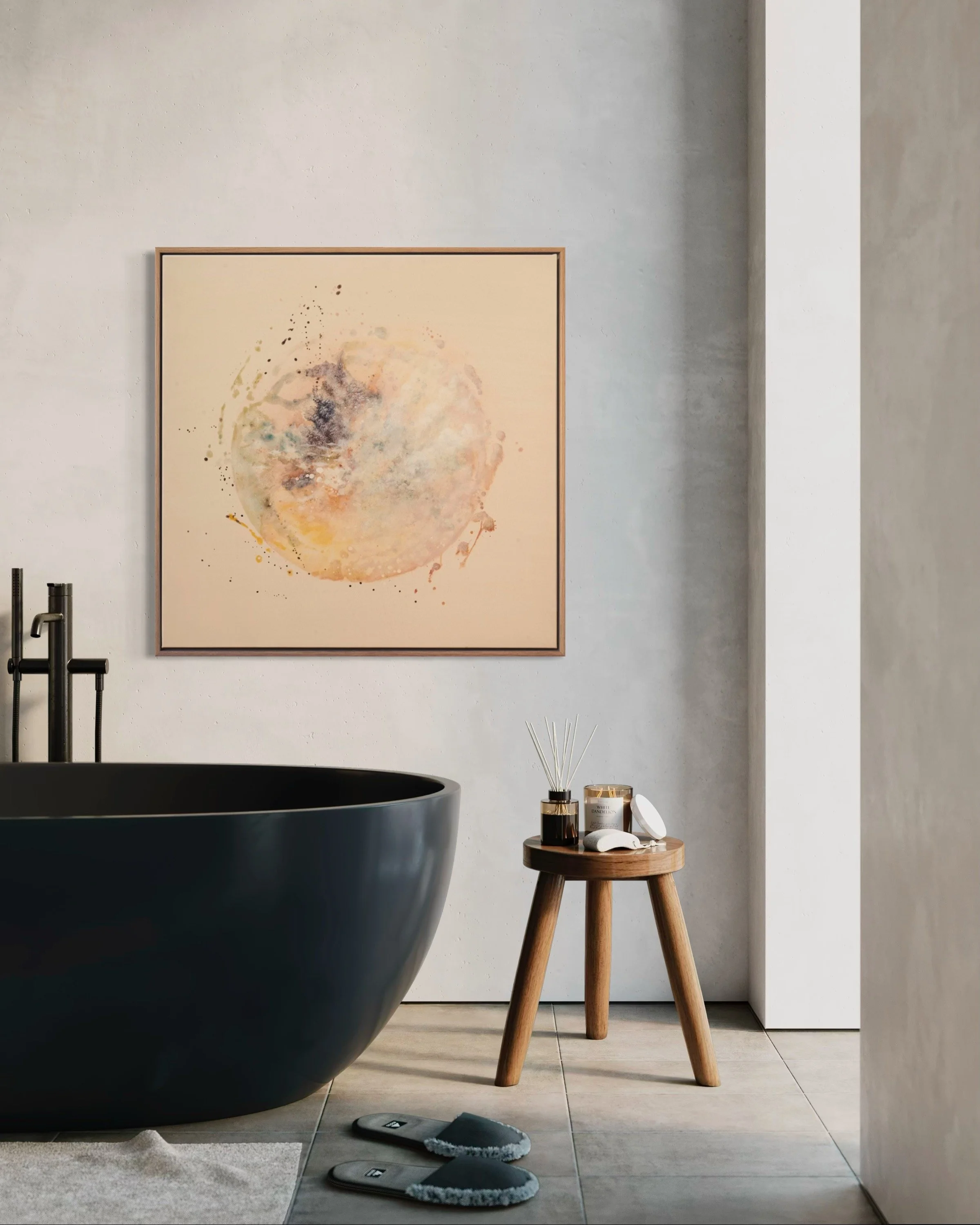Beginner’s Guide to Collecting Art with Meaning (Not Just Decoration)
How to Start Collecting Art
Without Feeling Overwhelmed
Collecting art for the first time can feel overwhelming. Many people think you need a huge budget, insider knowledge, or gallery connections to begin. The truth is, collecting art can be soulful, intentional, and accessible. When you choose pieces that carry meaning, you’re not just decorating a wall, you’re creating a home that reflects your spirit too.
Here’s a beginner art collector's guide to help you start your journey with confidence.
1. Look at the Artist’s Journey
Before buying your first piece, take time to read the artist’s bio or “about” page. Look for signs of dedication: how many years they’ve been practising, whether they’ve studied or exhibited, and testimonials from collectors.
If an artist has been creating for five, ten, or more years, it’s a good sign they’ve refined their craft. Their work will likely be archival, made with high-quality materials designed to last a lifetime. This also shows they’ve moved beyond the hobbyist stage and are committed to their practice for the long haul.
2. Tune Into How the Art Makes You Feel
The most meaningful collections begin with emotion. When you look at a painting, pause and notice how it makes you feel. Does it spark calm, joy, curiosity, or a sense of grounding?
Art goes beyond how it looks. It’s also about how it resonates with your nervous system, your memories, and the energy of your space. Start with what you feel most drawn to, even if it surprises you.
3. How to Pick Colours That Complement Your Room
Colour can completely shift the mood of your home. When choosing your first piece, consider the accents already in your space: pillows, rugs, furniture tones, or even the view from your window.
Blues, greens and soft colours bring calm and serenity (perfect for bedrooms or meditation rooms).
Reds, roses, browns, oranges and brighter yellows are activating and help bring joy, creative inspiration and flow in social, collaborative rooms (perfect for living rooms, dining rooms or home offices)
Earth tones connect your space to nature.
Neutrals create grounding and balance.
Select a painting that echoes or complements these colours, so the art feels like it belongs and enhances the atmosphere of your room.
4. How to Choose the Right Size of Painting for Your Wall
A common mistake new collectors make is choosing artwork that’s too small. When in doubt, always go bigger. A larger painting naturally anchors a wall, feels more intentional, and is easier to style furniture and decor around.
If your space can’t accommodate one big piece, you can also create impact with a gallery wall. Pairing two or more smaller works together creates a statement.
5. Beginner’s Guide to Framing Your First Painting
Framing is just as important as the artwork itself. A thoughtful frame can make your piece shine.
Wooden frames work universally well, especially in homes with neutral palettes, wood accents, or white walls.
White frames keep the focus clean and minimal.
Floating golden frames are stunning when a painting has shimmers in the pigments. These highlight the reflective quality beautifully.
Ask your artist if they recommend a frame style, or work with a local framer who can guide you.
6. Where to Display Your First Artwork at Home
Think about where the artwork will live in your space. Common gathering places like living rooms, dining areas, or entryways allow you and your guests to connect with the piece daily.
More intimate settings, such as bedrooms or meditation corners, make art part of your personal rituals. The placement of your piece can shape the mood of a room and the way you experience it.
7. Art Materials and Care Tips for First-Time Collectors
Don’t overlook the practical side of collecting. Ask your artist about the materials they use: paints, pigments, canvases, and sealants. High-quality, archival materials ensure your artwork won’t fade or crack over time.
Earth pigments last the longest, longer than synthetic paints (think caveman paintings!). They’re naturally light fast, meaning they don’t fade when exposed to sunlight.
That being said, basic care includes avoiding humidity, keeping your painting out of direct sunlight, and dusting frames gently. Treating your art as a living part of your home helps it last for generations.
8. Why Starting with One Meaningful Piece Matters
Many first-time collectors feel pressure to buy several pieces at once, but beginning with a single, deeply meaningful work is often the best approach. This allows you to build your collection slowly and intentionally, rather than rushing to fill walls.
Your first piece will always hold a special place in your journey. It’s a story, an energy, and a moment you chose to honour in your home.
9. Collecting Art That Resonates Instead of Following Trends
Finally, remember that collecting art is personal. Trends come and go, but the piece you feel connected to will continue to bring you joy.
When you collect with intention, guided by feeling, colour, placement, and resonance, your home becomes a sanctuary filled with art that matters.




